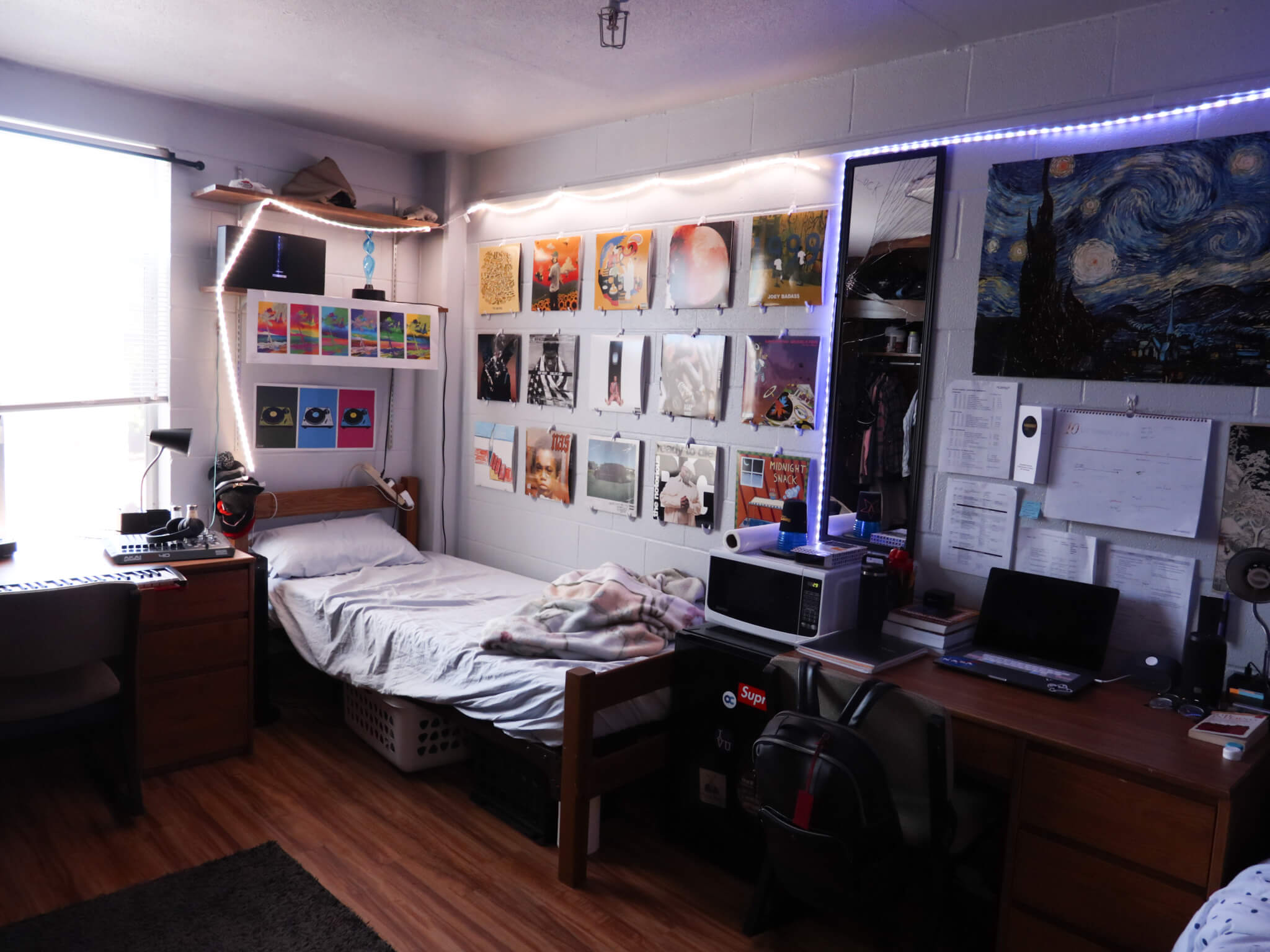
Photo courtesy of Vanderbilt.edu
When you think about the way technology and amenities have become such an integral part of the multifamily housing world, it stands to reason that the same would be true of student housing, especially when colleges and universities are competing to attract more students. You might imagine sleek, futuristic designs with all the bells and whistles—immersive tech lounges, yoga studios, maybe even robot butlers handing out lattes. But what you actually see is something very different. Familiar, even. And that’s what makes it so interesting.
At its core, student housing right now is about balance. We’re building with both nostalgia and necessity in mind.
For example, projects we’re seeing are building double occupancy rooms with shared “bathroom pods.” That’s just a fancy way of saying “the same dorm layout I lived in twenty years ago.” Two students to a room, shared bathrooms, community-style living. What’s old is officially new again—and that’s not a bad thing. In fact, there’s a strategy behind it.
Creating Connection
What really defines today’s student housing is the sense of community. Universities need to offer alternatives to the Greek system by building organic communities right into the residence halls. The idea is to create a cohort that grows together throughout college. It’s strategic, especially when you consider that keeping students on campus—particularly older students—is a growing financial priority.
Especially for freshmen, there’s a push to create social connection. A lot of that is a reaction to the isolation from COVID years. Universities have found that retention rates are better when students live with roommates. It makes sense—when you’re thrown into college life, it’s a lot less scary with someone to navigate it with. You build bonds faster when you’re brushing teeth in the same shared bathroom space.
Of course, as students move through college, the housing style matures with them. Suite-style and apartment-style setups become the norm for upperclassmen. Central living rooms, four bedrooms, a kitchenette. It’s not groundbreaking, but it works—and more importantly, it’s familiar and comfortable.
When it comes to amenities, it depends a lot on the location. If there’s a rec center next door, we won’t also build a full gym. But if the building is more isolated, we might include fitness areas or cozy common spaces. What you’ll usually find is a study lounge at the end of the hall and maybe a fireplace to give it some character. Students also crave outdoor space, whether that is small decks, courtyards, or even elevated terraces. They want spaces where they can breathe fresh air, gather, and study or relax in the sunshine.
Building to Suit the Location
Affordability and access will also dictate what kinds of construction we’re building. Urban housing prices have gone wild, and renting off-campus isn’t the easy fallback it used to be. That’s a big reason why schools are working harder to keep students on campus. It’s simpler, safer, and makes financial sense for everyone.
On campuses in dense urban environments, we’re building with concrete structures—it lets us go higher and gives us more design flexibility in the long run. For more rural or SEC-style campuses we’re using metal studs, building pitched roofs, and using fast, efficient, and familiar materials to suit the environment.
But no matter whether we’re building in dense, urban areas or on sprawling campuses, we have to plan everything from deliveries to sidewalk and lane closures to ensure safety for our workers and the surrounding population. This planning also ensures we’re meeting our deadlines. There’s no wiggle room when you’ve got a ticking clock and a freshman class showing up in August. The stakes are high, to say the least.
Technology With Purpose
Even though fancy, technology-enabled amenities can help earn higher rents in multifamily construction, for student housing, integrated technologies are usually only employed in areas where they give the most bang for your buck. Keyless entry and single-entry points are becoming standard, for student safety, and cameras have long-been standard security features. In terms of smart technology, it’s more about removing daily friction for students instead of dazzling them with innovation – think basic wireless access and app-based laundry notifications, something most households would enjoy!
Some schools are also experimenting with “ghost kitchens” in student housing buildings—small, flexible food service areas where vendors can pop in and out rather than full-scale dining halls in dorms. It’s about quick bites, grab-and-go sandwiches and coffees, and yes, plenty of DoorDash deliveries.
But for all the complexities, the real goal in student housing construction remains simple: create spaces where students can thrive—academically, socially, and emotionally. The buildings don’t have to be flashy. They just have to work.
And if that means drawing on some time-tested layouts from my college days? So be it. Turns out, we got a few things right the first time.

